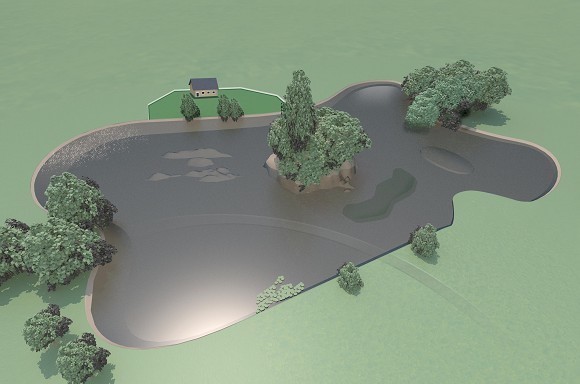
How to locate carp during spring
Locating carp during the spring months
1. Snags
On any lake, snags are a huge feature to fish to, but they become particularly attractive as we move into the spring months. Casting tight to the edges of the overhanging bushes and the like will often produce you a bite.
TOP TIP
When fishing up against snags make sure the fish can’t take any line by fishing a tight clutch and directly across to the snag. This stops them kiting and gaining sanctuary into the snag.
2. Points
Although ‘points’ offer the same advantage throughout the year – i.e. you can cover a very large amount of water, this becomes particularly useful during the winter and spring. It allows you to spread your rods about and will often give you a good chance of intercepting a few fish. They also offer good visibility for spotting carp.
TOP TIP
Spread your rods right out and see if you can intercept fish. If you see fish showing out in front, cast at them with a single hookbait.
3. Weedbeds
Another place that carp will spend a lot of their time in the spring is fresh, re-emerging weedbeds. Not only do they offer the carp sanctuary and safety, the weed will also hold a lot of natural food.
TOP TIP
Make sure your gear is up to the task of fishing a weedy water. Use a strong line of 15lb or above to cope with dragging back large lumps of greenery.
4. Sunken roadways
In dry-dug pits, the areas and roadways the machinery used to get in and out of the pit are often used as feeding areas and navigation routes, so a bait presented on here is perfect
TOP TIP
Pin all of your rigs down with putty, as this will stop the fish from spooking out of the area
5. Margins
No matter how big or small a lake is, one of the biggest features are the margins, and this is particularly so as the water begins to warm. Some key features to look out for are reeds, lilies, overhanging trees and gravel humps. DO NOT ignore these this spring!
TOP TIP
Bait up several spots before you fish and check them throughout your session to see if the carp are feeding on them.
6. Shallows
These are the first places carp will head for as the weather improves. The water will warm here quicker than the deeper parts of the lake, so always head for the shallower parts of the lake during the daytime.
TOP TIP
Make sure you use a very slack line; a tight line will spook them out of the area.
7. Bars
Gravel bars are ridges formed by the massive scoops that extract gravel. These are used as underwater motorways by the carp and are good to fish on as the weather warms because they can be some of the shallowest areas in the lake.
TOP TIP
Use some sort of a leader like tubing or leadcore to stop the fish cutting you off on the often-sharp gravel.
8. Bays
Bays are a huge feature to the carp in the spring – especially if they’re shallow. Often when the main body of a lake gets busy – which it will as the weather improves and everyone get that ‘fishing bug’ back – they will go to small bays and coves to get away of the angling pressure. Keep an eye on bays that are on the end of a new and warm wind, as you will often find the carp stacked up in there!
TOP TIP
Keep an eye on these bays because they’re either full of carp or totally devoid of them. If you see fish in there, make a move.



